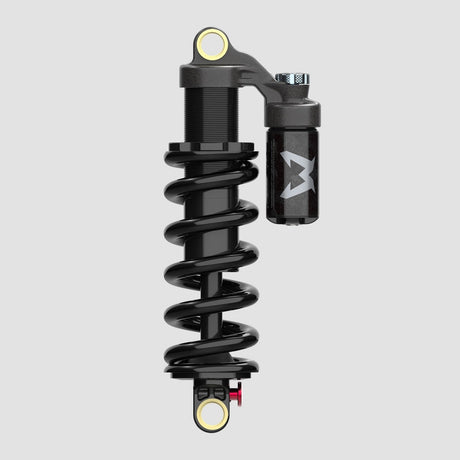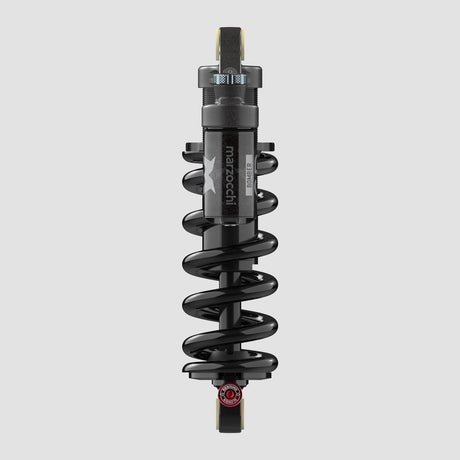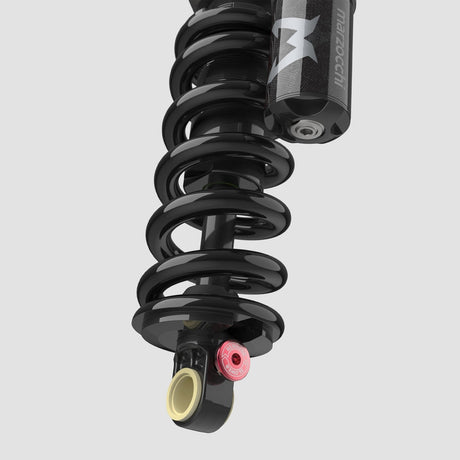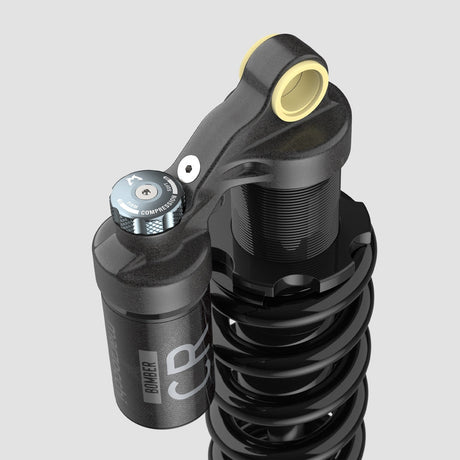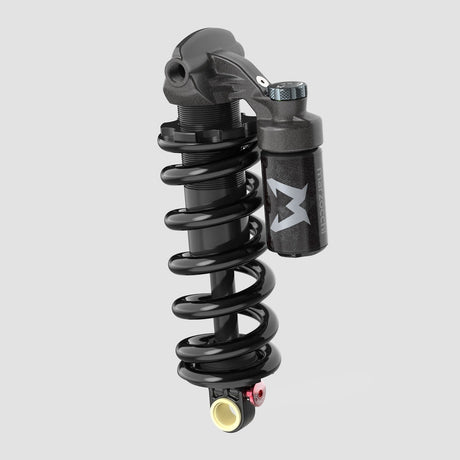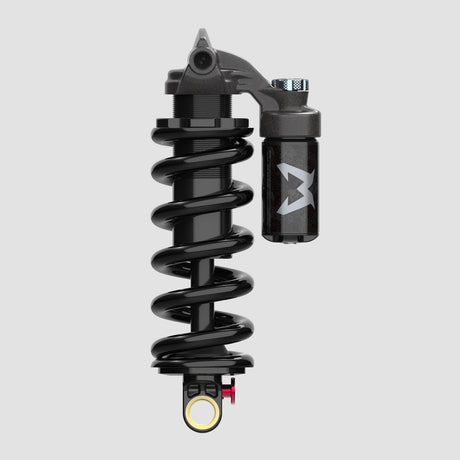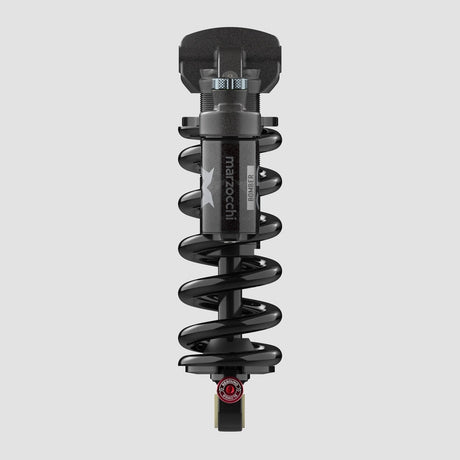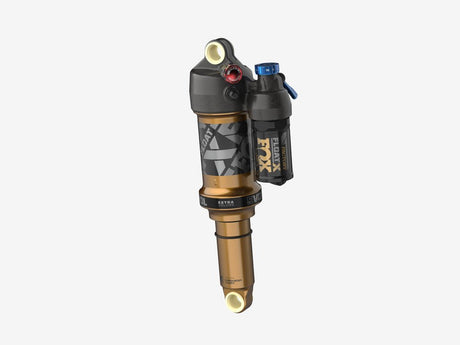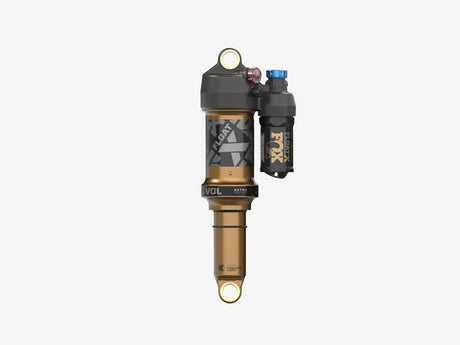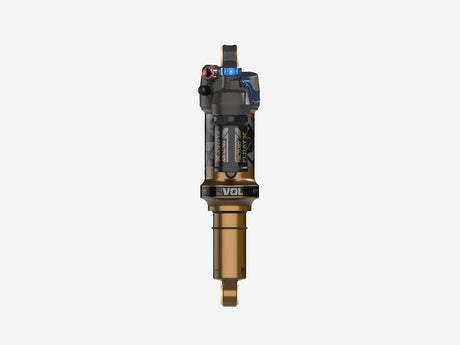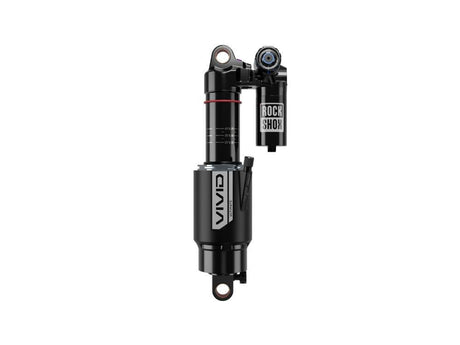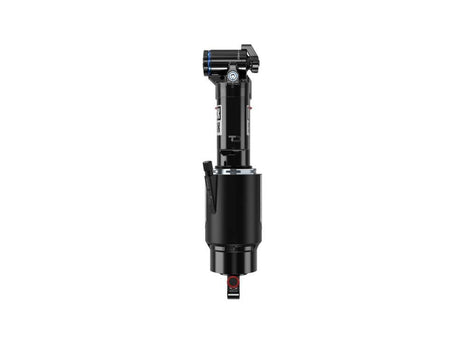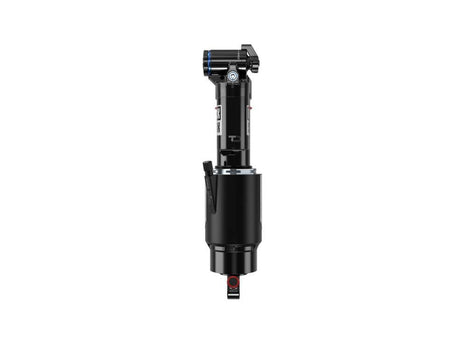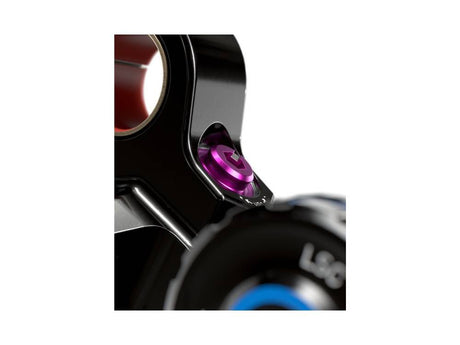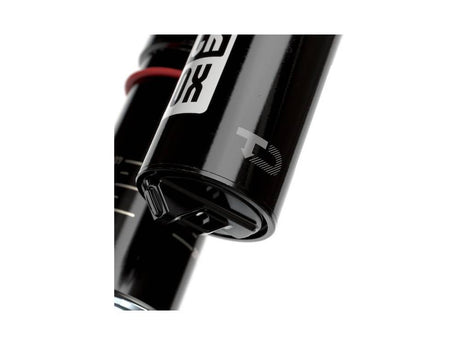Intro
Coil vs air shocks has been argued for as long as the two have been around, and we’re here to set the record straight. There are a lot of misconceptions about the two styles of shocks, and this article aims to break down all of their differences and exactly who should be using which one! Here at The Lost Co, we all go back and forth between the two depending on a bunch of factors, like which bike we’re riding, what trails we’re riding, and just for the sake of switching things up!
Before we jump in the deep end and start comparing them to each other, let’s talk about what makes a rear shock either a coil shock or an air shock, and how to discern them from another. This is about as straightforward as it gets, and just by looking at the shock it’s easy to immediately tell them apart. A coil shock will have a big spring winding around the body of the shock, and an air shock will not! Coil shocks use that spring to support your weight, while an air shock has a can of air that get compressed by a piston as you sit on the bike to keep you comfortable. Both shocks also have dampers to control the motion of the shock as you ride through chunky trails, and the only difference between them is either using a coil spring or an air spring to hold your body weight up.
| Air shocks | Coil shocks |
|
Pros
|
Pros
|
|
Cons
|
Cons
|
Setup and Tuning
First off, neither is inherently better, they’re just different. Both air and coil shocks can offer incredibly premium performance, and are offered in a wide range of sizes to fit any trail, enduro, or downhill bike. So let’s compare the differences!
The first thing you need to do with any shock is set your sag, and this is essentially how stiff or soft shock is. This is much easier with an air shock, because all you need is a shock pump and you can add or subtract air to change your sag in a matter of seconds. With a coil shock, you need to purchase different springs to change your sag, and while we have a great spring rate calculator on our website to get you started, it’s still tricky to get right on the first try. While every bike may look like a Session, they all have very different kinematics and can require different spring rates to get the same sag even if they have the same travel and shock measurements. Spring rate calculators are a great tool to give you a starting point for your spring rate, and riders will often end up buying a couple springs before finding the perfect fit for them and their bike.
Once your sag is set, you’ll want to tune your shocks performance. For damper adjustments, both air and coil shocks can be highly adjustable in terms of compression and rebound because manufacturers are able to build high end dampers with plenty of dials for either style of shock. For example, a Float X2 and DHX2 have the exact same damper with all the low speed and high speed adjustments in the world. The only difference is one has an air spring, and one has a coil spring. Both push oil through the same damper as they move through their travel, letting you turn all the dials you could ever want!
When it comes to adjusting these springs, air springs are more adjustable. Adding volume spacers gives air shocks more progression and increases bottom out support, while removing volume spacers makes the shock more linear and lets you use full travel more easily. Coil shocks are inherently linear and the only way to tune their progression is by buying a progressive spring, which costs money! Even with all their volume spacers removed, air shocks are still more progressive than coil shocks, and coil shocks are best suited for frames with progressive leverage curves built into their suspension design.
Performance
Now let’s talk about performance. A coil shock is going to keep your rear wheel glued to the ground a bit more and maximize traction because there’s less friction in the system. With smaller and fewer seals, there’s just less stiction that you’re fighting against to move the shock through its travel, giving amazing small bump sensitivity.
There used to be a bigger difference in how sensitive air and coil shocks were in their initial stroke, but modern air shock technology offers a ridiculous amount of traction that will be plenty for most riders, but still they can’t quite match that ground hugging feeling that a coil shock offers. Also, less friction in coil shocks means less heat, reducing the chances of your shock overheating on long descents.
Air shocks have a more spirited and lively attitude, and this comes from the progression of the air spring. Because they’re naturally progressive, you won’t use as much travel when popping off a lip or going through a rock garden. They’re also quite a bit lighter than a coil shock, sometimes up to an entire pound depending on the configuration.
All frames are also going to feel great with an air shock because of their tunable progression, but bikes with linear leverage curves can struggle to keep from bottoming out when equipped with an entirely linear coil shock.
Service
When it comes to service, both air and coil shocks require damper services at set intervals and most air shocks also require an air can service in between those damper services. Obviously you won't need to service the steel spring on your coil shock, so coil shocks are typically serviced less frequently than air shocks. But you still need to stay on top of those service intervals no matter what kind of shock you have, or else they’ll feel like hot garbage!
Price
For price, coil shocks appear to be a bit cheaper than comparable air shocks at first glance, but just like those double A batteries, the spring is sold separately. When you factor in the price of an affordable steel spring, both shock types are about the same price, but if you want to ball out with a nice light spring, the coil shock can get a little more pricey than the air shock. Also, the first spring or two might not achieve desired sag and riding characteristics. If you have to buy multiple springs, it adds up quickly.
Which Shock Is Best For You?
Let's not overcomplicate things now that we've gotten this far! If you want a shock that is easier to set up, you want to save weight, you prefer a more lively bike, or your frame has a very linear leverage curve, you’ll be happiest with an air shock. If you want to prioritize all out traction and keep your bike glued to the trail, a coil shock is the easy choice!
Our favorite air and coil shocks here at The Lost Co are all from RockShox, and two of them are Super Deluxes! We've compared these two air and coil shocks already, and recently, RockShox released their new Vivid shock that aims to split the difference between the two. All three of these shocks are built around RC2T dampers and offer premium performance for all kinds riding from trail to downhill that will leave any rider impressed with their ride quality.


